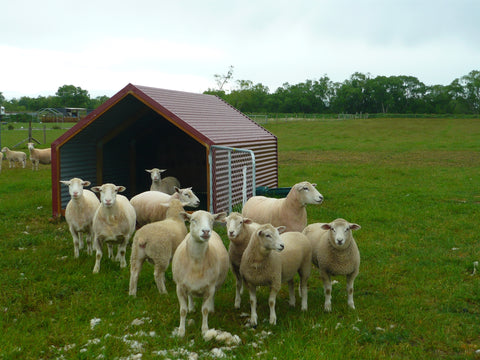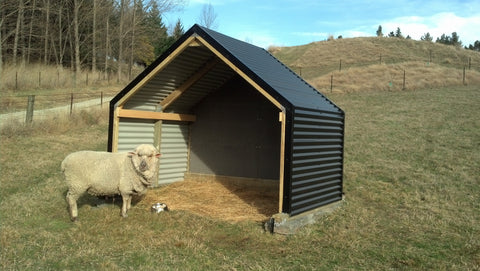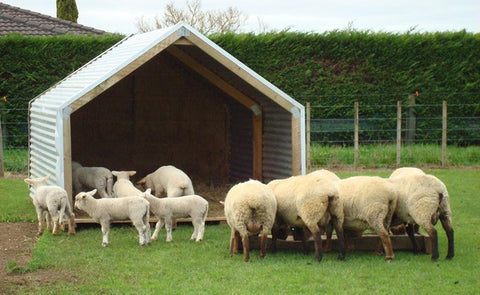Author: Lisa Smith
Navigating the challenges of New Zealand's unique agricultural landscapes requires not only an intimate knowledge of our rich soils and varying climates but also a keen sensitivity towards the needs of our livestock. Sheep farming, a cornerstone of New Zealand's agricultural economy, calls for robust and effective husbandry strategies to secure sustained productivity. One such strategy, which often goes under the radar, is providing sheep—particularly lambing ewes—with ample shelter.
New Zealand's climate can throw curveballs, from sudden downpours and gales to icy temperatures and snowfall in southern regions. These conditions can significantly endanger the health and survival of sheep, especially newborn lambs. Providing shelters is a lifeline against these elements, potentially lowering mortality rates among newborn lambs and ensuring the overall well-being of the flock.
The benefits of providing shelter, especially during periods of cold and rainy weather, are manifold. It significantly bolsters the health and productivity of livestock. Easy-to-implement sheltering solutions can guarantee the welfare of your livestock, resulting in enhanced farm profitability. The Animal Welfare Act 1999, outlines shelter requirements for animals to be protected from weather-related problems that could affect their health.

Bolstering Lambing Survival Rates
The primary benefit of providing shelter to lambing ewes and their young is the potential for improved survival rates of newborn lambs. Lambs, especially in their first hours of life, are vulnerable to hypothermia. In severe cold, damp, and windy conditions, lambs can lose body heat faster than they can generate it, resulting in chilling, stunted growth, and in severe cases, death. Sheltered areas for lambing safeguard newborns from harsh weather, thereby enhancing survival rates.
Promoting Animal Health
Persistent exposure to extreme weather conditions can suppress sheep's immune systems, making them prone to diseases like pneumonia, parasitic infections, and various stress-induced illnesses. Shelters provide a safe haven for sheep to rest and recover, strengthening their immune systems and overall health.
Boosting Feed Efficiency
Shelter can also have a positive influence on feed efficiency. Sheep exposed to cold, wet conditions often need additional energy to maintain their body temperature, thereby requiring more feed. Providing shelter allows the energy that sheep would use to ward off the cold to be redirected towards growth and production, including wool production, lamb growth, and maintaining body condition in ewes.

Enhancing Welfare and Productivity
Studies have underscored a clear correlation between animal welfare and productivity. Sheep that are less stressed and healthier typically display heightened productivity. Offering suitable shelter doesn't just fulfill the ethical standards of animal welfare; it can also lead to enhanced wool quality and reproduction rates.
Giving sheep, particularly lambing ewes, shelter during harsh weather is not just an ethical and economic imperative, it also reinforces the robustness of our NZ farming practices.
Farmers are more than livestock caretakers; they are stewards of the land. As we continue to confront unpredictable weather patterns and changing climates, creating and sustaining sufficient shelter is a simple but effective stride towards sustainable and resilient farming in New Zealand.
Options and Solutions for Livestock Shelter
When considering shelter for sheep, factors like your farm's landscape, local climate, and the specific needs of your sheep are important. Here are some effective shelter options:

Each shelter type has its benefits and considerations. Often, a mix of different shelter types might be the most effective for your farm. The best shelter for your sheep will hinge on your specific circumstances, including your budget, available resources, and the particular needs of your flock.
The primary objective is to provide your sheep with a secure and comfortable environment that shields them from harsh weather conditions. Establishing and maintaining such a shelter is a clear investment in the welfare and productivity of your livestock, and in the resilience of your farm.
Outpost Buildings offer a quality range of livestock shelters suited for sheep and other livestock. The range includes portable shelters and delivery to your farm can be arranged NZ-wide. The shelters arrive in flatpack form complete with fixings and instructions for quick construction. If required, Outpost Buildings can even arrange contractors to assemble your shelter.



